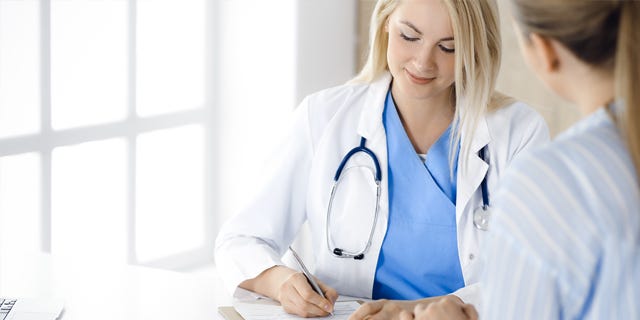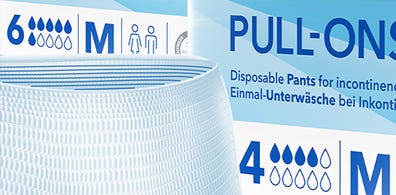Understanding the Link Between Menopause & Urinary Incontinence



Urinary incontinence is a common menopausal symptom that can impact a woman’s physical and mental wellbeing.
However, many women are too embarrassed to discuss this sensitive topic with their healthcare professional, mistakenly believing it to be a natural part of the ageing process and simply enduring the distress it causes. It’s important that as healthcare professionals, you encourage women to share their concerns and be proactive about their pelvic health during this natural transition in life.
This blog will help you better understand the relationship between menopause and urinary incontinence, its causes, how to support women and provide the best treatments.
Types of urinary incontinence in menopausal women
There are three types of urinary incontinence that typically affect menopausal women:
Stress Incontinence
Falling oestrogen levels during perimenopause thin the urethra and weaken the pelvic floor muscles, triggering tiny bladder leaks that can occur when a woman coughs, laughs, sneezes or lifts a heavy item.
Urge Incontinence (Overactive Bladder)
A sudden urge to urinate that occurs on a frequent basis throughout the day.
Mixed Incontinence
A combination of urinary incontinence symptoms and urge incontinence.



Risk factors for urinary incontinence in menopause
Menopause and urinary incontinence are closely intertwined, with declining oestrogen levels during menopause having a significant impact on the pelvic muscles and tissues that support the bladder.
Understanding the risk factors associated with these conditions is vital for both diagnosis and comprehensive care. Below, we delve into the key risk factors for both menopause-related urinary incontinence and its broader implications.
Menopause-related urinary incontinence
Hormonal Changes – menopause, characterised by declining oestrogen levels, contributes to the weakening of the pelvic muscles and supporting tissues. This structural shift can disrupt bladder control and lead to urinary incontinence.
Ageing – while urinary incontinence becomes more prevalent with age, it is important to note that it is not an inevitable consequence of growing older. Postmenopausal women are approximately 50% more likely to experience urinary incontinence, often a primary symptom of genitourinary syndrome of menopause (GSM).
Genitourinary syndrome of menopause (GSM)
GSM is a comprehensive condition encompassing various symptoms beyond urinary incontinence. These can include:
● Vaginal dryness
● Decreased libido
● Bladder issues during intercourse
Diagnosis considerations
When diagnosing women with menopause-related urinary incontinence, it's important to adopt a holistic approach by considering a number of potential contributory factors. These could include:
● Number of pregnancies
● Birthing trauma
● Hormonal disorders
● Obesity
● Chronic constipation
● Diseases that cause nerve damage, e.g. Parkinson’s disease
● Certain drugs like diuretics
● Previous operations
The psychological and emotional impact of menopausal incontinence
Living with urinary incontinence during menopause can affect a woman’s physical and mental wellbeing – from impacting their sex life to causing anxiety and a lack of confidence when going out.
Healthcare professionals can address these concerns by positively approaching urinary incontinence and encouraging women to discuss their symptoms.



Early intervention and strategies for managing incontinence during menopause
Although menopause and urinary incontinence remain taboo, early intervention is vital, as genitourinary syndrome of menopause can worsen over time.
One of the principal steps women can take to reduce the risk of developing incontinence both during and after menopause is by performing pelvic floor exercises for at least three months.
These should be practised even if women do not have incontinence symptoms, including at times like pregnancy and childbirth.
Strategies for maintaining overall pelvic health include pelvic floor exercises and low-impact activities such as pilates.
Healthcare professionals can also offer women practical tips to help manage incontinence during menopause. This could include the following behaviour changes:
Eat Well
Losing weight can help. Studies suggest a 5% weight loss reduces symptoms in obese patients. Eating more fibre can also prevent constipation, which can cause urinary incontinence, while avoiding spicy and acidic foods that irritate the bladder may help as well.
Drinks
A reduced consumption of caffeinated, carbonated or alcoholic drinks can help alleviate bladder irritation. Drinking 6 – 8 glasses of water per day can increase the overall capacity of the bladder.
Exercise
High-impact sports like running should be avoided due to the pressure they can put on the pelvic floor. If pelvic floor exercises are carried out regularly, high-impact sports can be reintroduced.
Other preventative measures could include stopping smoking (coughing puts pressure on the bladder), tightening the pelvic floor when lifting objects and keeping hydrated to avoid constipation.
Medical interventions and treatments
There are a wide variety of medical treatments available to treat menopausal incontinence. These include:
Oestrogen Pessaries
A local topical treatment inserted in the vagina to enhance skin elasticity. Recent research has shown that these can be especially beneficial in reducing or eliminating stress incontinence and supporting the urethra.
Medications
Antimuscarinics can calm overactive bladders, mirabegron can help the bladder relax and fill, and duloxetine can keep the urethra closed.
Electrical Stimulation
Used in physiotherapy to train the pelvic floor muscle by placing a small probe inside the vagina.
Biofeedback Training
Provides feedback on how well a patient is performing pelvic floor exercises.
Bladder Training
Teaches women to regain control by scheduling toilet trips and waiting longer between bathroom visits.
Pelvic Floor Exercises
Also known as Kegel exercises, this effective method of regaining bladder control involves squeezing and relaxing muscles in the pelvic region to strengthen them.
Surgery
Used as a last resort after other therapies, surgical treatments include colposuspension, sling surgery and vaginal mesh surgery.
Incontinence Products
These items are beneficial while awaiting diagnosis or during treatment to help promote dignity. There are a variety of products to choose from to suit individual needs, including pads and pull-up pants.
All women experience symptoms of the menopause and urinary incontinence is a common symptom. However, healthcare professionals can encourage women to share their concerns and be proactive about their pelvic health during this natural transition in life. If necessary, make referrals to the appropriate healthcare professional, whether physio, GPs or urogynaecological consultants, to ensure effective management and treatment.
Explore our range of continence products designed to help women manage urinary incontinence, and learn why it’s vital to ensure the correct level of absorbency.
References
National Library of Medicine - Urinary Incontinence in Postmenopausal Women
North American Menopause Society - Urinary Incontinence
Web MD - Menopause & Bladder Control Management
Healthline - Menopause & Urinary Incontinence
National Library of Medicine - Effectiveness of Hormones in Postmenopausal Pelvic Floor Dysfunction
Kegel 8 - Is HRT Making Your Menopause Worse?

Sexual Health & Incontinence

Which Medications Can Cause Incontinence?

Incontinence in Young Women: Key Causes

Nocturia & Nocturnal Enuresis (Adult Bedwetting)

How To Stop Urine Leakage When Coughing



